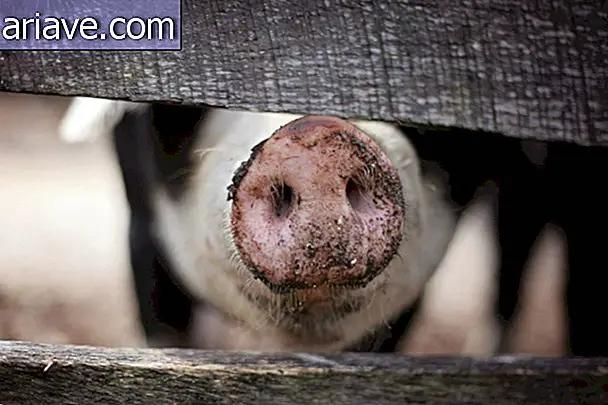It's time for Brazil: see how was the fashion in the last 100 years of the country
Cut is already known for presenting how beauty patterns and fashion trends have changed over the years. In the “100 Years of Beauty” series, the channel was breaking the hair and make-up transformations of many countries.
Now it was Brazil's turn to win a video that shows, in less than 2 minutes, what made the head of Brazilians in the last century.
Was it curious to know what influenced these changes in the looks of the Brazilian? Here's a summary of each decade:
1910

This decade was marked by the First World War, the sinking of the Titanic and the beginning of the Russian Revolution. In Brazil, even after almost 90 years of independence from Portugal, the country still had full European influence. On the streets, men and women sported garments that did not fit the tropical climate.
In this period, the female emancipation began, which also left its reflection in fashion: they began to wear pants, in addition to skirts and shorter hair. Other items that were successful were turbans, feathers and tunics that mimicked animal skin.
1920

In the 1920s, the United States, even though it was one of the largest nations in the world, suffered from the crash of the New York Stock Exchange in 1929. In Europe, there was still the rise of Nazism and the rise of fascism in Italy and Europe. of Salazarism in Portugal.
Art would definitely be changed by the works of Charlie Chaplin and the emergence of Marcel Duchamp's Dadaism and Salvador Dali's surrealism.
In Brazil, the richness of coffee cultivation led many young people to study in Europe, bringing modernist concepts to the country. The fashion standards remained the French. The figure of the flapper, created by J. Carlos, with shorter skirts, abolition of corset and chanel hair.
1930

The 1930s were considered by many to be the worst decade of the 20th century for beginning with the Great Depression and ending World War II.
Brazil suffered the impacts of the stock market crash in the United States and, in general, periods of crisis usually do not have much boldness in the field of fashion. At this time, the first adaptations of clothing to the Brazilian climate appear. Unlike in previous years, skirts and hair gained length.
1940

The 1940s are marked by the height of the armed conflict that began in the 1930s. The Holocaust, the Japanese attack on Pearl Harbor, the atomic bombs in Hiroshima and Nagasaki, and the beginning of the Cold War, were the main events that moved the world.
In Brazil, the transition from the government of Getúlio Vargas to that of Eurico Gaspar Dutra was marked by the decline of the Estado Novo, the censorship of the media and the return of complete democracy, with the holding of elections for the positions of governors, state deputies., mayors and councilors.
Fashion was mainly influenced by Hollywood movie divas such as Rita Hayworth, Ingrid Bergman, Ava Gardner and of course Marilyn Monroe. Also emerged the national figure that would become successful inside and outside the country: Carmen Miranda, with a Latin American look.
With the large drop in imports due to wars, it was in this decade that the “Brazilian fashion” really emerged.
1950

The 1950s was considered a transitional period between wars, behavioral changes and technological advancement. Television came to Brazil, and the cinema was marked by the “Golden Age”.
In the country, the government of Juscelino Kubitschek created the Plan of Goals, which promised the advance of Brazil with the motto "50 years in 5". These transformations brought structural changes in cities, resulting in more cosmopolitan behavior.
The rise of couturiers has made fashion more independent of French trends. With this, the publications on the subject began to give more value to national productions.
1960

The 1960s established the ideals that began to spread in the 1950s. Cultural and ideological changes caused a crisis in the rigid model of society prevailing until then. In the United States, the "American Dream" was no longer a goal for young people, and avant-garde and rock movements were gaining prominence.
In Brazil, this period was marked by the military dictatorship and the emergence of the tropicalist movement.
1970

The oil crisis has caused recession in the United States, Brazil, Sweden and the United Kingdom. On the other hand, countries like Japan and Germany have seen their economies grow. In this decade, the concern with the environment was on the rise and the discotheques began to appear.
1980

The 1980s were the symbol of the end of the Industrial Age and the beginning of the Information Age. Brazil was still facing dictatorship, but pressures for elections resulted in the movement of "Diretas Já".
In 1985, the first fashion school in the country emerged, and the main influencer of the moment was Rede Globo with its soap operas.
Gyms began to become popular and body-shaped bodies became icons of aesthetics. In Brazil, the presenter Xuxa has become a beauty model.
nineteen ninety

This decade began with the collapse of the Soviet Union, the end of the Cold War and the consolidation of democracy and globalization.
In Brazil, the scenario is of crisis and unemployment caused by the Collor Plan, causing the closure of numerous stores and clothing. The standard of beauty goes back to models, their slim bodies and androgynous beauties.
2000

First century of the third millennium, the 2000s would be marked by the War on Terrorism waged by the United States against the Middle East countries.
The fashion is simpler, leaving the straight and loose hair and jeans. The icon of beauty continues on the catwalks: it is the turn of model Gisele Bündchen to dictate the trend. However, unlike the previous decade, which prized for excessive thinness, this time the curves are more valued.
2010

The economic crisis that began at the end of the previous decade mainly affected the countries of the European Union.
In fashion, the new standard is the guitar body, with Kim Kardashian the perfect model.
Which decade do you prefer the beauty standard? Comment on the Mega Curious Forum











